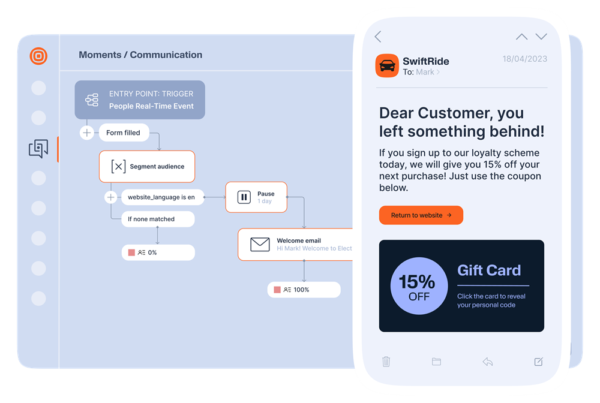Two years ago, AmEx CEO Ken Chenault laid out for Fortune Magazine his company’s view on the mobile payments opportunity.
“Mobile will redefine how commerce is done…the opportunity for startups to redefine the power of mobile is incredible. Scale is important, but if you have the idea, you now have the ability to connect with companies that can drive that scale. More and more, startups will be able to connect to these services to scale quickly.”
In other words, new market entrants with big ideas can innovate, but they will need global payments networks to help them go to market.

It’s the oldest of the schemes (the company was established in 1850 – the card network in 1958) and is different in that it is both a card issuer and a payments processing network. American Express also operates a closed-loop network, allowing it to see all sides of a transaction and making it uniquely positioned to deliver offers and rewards to its customers.
Since Chenault made those statements, AmEx has delivered on its promise to ally closely with new mobile payments products. It was compatible with Apple Pay on day one, and last year it was exclusive with Apple when the iPhone company pledged to bring its mobile payments service to Australia, Canada, Spain, Singapore and Hong Kong.
AmEx has been similarly supportive of Android Pay and Samsung Pay.
The challenge for operators selling cloud services is that people see it like an insurance policy. They sign up and then forget about it… What we want to do with RealTimes is stimulate engagement – and ultimately keep subscribers loyal to their carriers.
Mike Matan, vice president of network capabilities at American Express, says the firm is careful to go where it believes its customers are heading. “There are many options, but we know our cardholders are interested in mobile payments so we have made sure we’ve been present on all the major launches. And it’s worked out. Three years ago I was always being asked – will mobile wallets happen? I don’t get asked that any more.”
That said, there is evidence that the adoption of these device-based wallets may not be picking up as fast as hoped. One report said Apple Pay – some 15 months into its launch — drives something like 0.002 percent of retail sales in the US.
Matan acknowledges this but sees the long term trend as mobile-bound. “It’s true that there’s not much wrong with in-store payments. I do believe though that people will move towards mobile in time. For now, those who do use it really enjoy it – and it’s important for us to give them the choice.”
Of course, in-store mobile payment is just one facet of a fast-changing payments landscape. It’s habitually over-hyped probably thanks to Apple’s visibility in the space.
But payment watchers recognise that there’s arguably a bigger change taking place online, where the payment experience really can be improved.
To support this, AmEx recently unveiled AmEx Digital Solutions. It all serves to simplify commercial terms for issuers, and minimise the technical work necessary to develop their own digital services.
The offering includes NFC and host card emulation technology, but also the American Express Token Service and American Express Checkout.
The latter is designed to speed up transactions online. It lets AmEx cardholders use their existing AmEx log-in credentials on e-commerce sites to pay with reduced fuss. At launch retailers including Burberry, Ticketmaster, Warby Parker and The Wall Street Journal all supported the product.
Meanwhile the token service accelerates the transition towards safer payment processing (by enabling e-retailers to store a token linked to the card, rather than the card details themselves).
With all this background activity improving online transactions, one wonders how long it will be before there’s a blurring with the in-store experience.
After all, it seems odd to pay for anything anywhere on your phone, only to queue up to tap a reader if you happen to be in a shop.
Matan acknowledges this, but says he remains an NFC enthusiast. “For the moment I see contactless as the the prime mobile channel at retail. If you go to Australia, for example, you see incredible enthusiasm for it. In time, I’m sure there will be a convergence of online and off. But until that time, we will continue to be supportive of NFC.”
Don’t forget, that rush to contactless is not just about smartphones. Wearables are also a factor. And again, AmEx has been careful to support this nascent consumer habit. Last year, it teamed up with Jawbone to launch the contactless-enabled Up4 wristband linked to the wearer’s American Express card account.
Features Editor
MEF Minute


Just a few years ago it would have been unthinkable that a ‘bracelet’ company would be part of the payments space. But it’s just one facet of the digital transformation. There will be more surprises, no doubt. But, to echo his CEO’s sentiments, Matan firmly believes the newcomers will always need the support of global networks.
He says: “It’s easy to underestimate the complexity of building a global network: the need for interoperability, standard practices and customer support – not to mention the regulatory burden. We know what it takes. And that’s why I don’t believe a startup can seize the whole market. That said, new entrants are bringing fascinating new ideas to the market, and we’re very excited to support them.”





